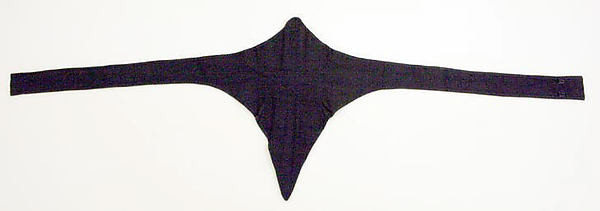Building on the
separates post (though you can also wear them with
dresses): belts, girdles, corslets,
corsages*, sashes, waists, waistbands,
ceintures... there are a number of different decorative over-garments worn at the waist in the 1860s, and an even larger number of names for them. For added confusion, many of the names are used interchangeably. Nonetheless, let's check out a few.
First, the narrow belt. At it's simplest, this is a plain band of ribbon worn around the waist, possibly fastening with a buckle or clasp. The examples below are all around 2.5" wide, except for the mother of pearl one, which is 1.5". Notice the different types of buckles: there are two-piece versions which hook together, pronged buckles, and solid "slide" styles available.
A more structured "belt" (also styled as a "waistband"/"waist" or "corselet") consists of silk or velvet over a stiff fabric such as buckram. These belts may also have boning to help the points lie flat. Various styles are possible, including one, two, or three points up or down at the front; the "waist"may also have back points. It can fasten with hooks and eyes or laces at the side or at the back (or even lace up the front).
 |
| Peterson's, May 1862 |
 |
"Mauve silk corselet trimmed with lace",
worn over a white muslin body and a muslin tunic.
Le Follet, 1863 |
"Swiss Waists", "Medici girdles" and "Medici Belts" are more names for this garment (or similar ones). A Swiss waist, corselet or corsage may also be substantially larger: while a 'belt' or 'girdle' is usually entirely below the bust, some of these latter garments may reach up to or over that point--closer to a low-cut second bodice than a 'belt'.
An original "Swiss Waist" with
front and back points (and close-up images of construction details!) is posted on
The Fashionable Past. The Graceful Lady also has various
original corslets, not to mention
CDVs showing them worn: over dresses, with matching skirts over white waists, or with contrasting skirts and bodies.
"The Russian, Swiss, and Medici Waistbands are worn more than ever. Some are plain, some stitched in colored silk, others embroidered with silk, braid, etc. The long sashes, tied at the side, and generally black, are also embroidered with a design to match the dress they accompany. These sashes, edged with a fluting or a row of lace, with braces and pocket trimmings to match, are in great vogue, and, especially when adopted to muslin chemisettes, are extremely pretty for very young ladies." --Peterson's, March 1862
 |
"Medici girdle or waistband" and braces in black velvet
and lace; matching cuffs and a bow are also given. The
girdle may be laced up the back or hooked at the sides.
Peterson's, March 1862 |
The braces or
bretelles mentioned above are the shoulder straps. They're especially common on children's and young women's accessories.
Girdles are another name for the pointed belts discussed above, though the term seems to be applied to a wider variety of shapes, such as this rounded one:
 |
| Back View |
Sashes and scarves are distinguished by their long, trailing tails. In addition to naming the flowing ribbons sometimes affixed to girdles/waistbands, a sash could also be a garment in its own right. These typically have very long, rounded tails, and may have a bow at the waist. Scarves, likewise, can also refer to various cloths worn at the neck.
 |
Scarf ceinture or 'girdle' with velvet applique and runched ribbon trim (left);
plaid tafetta sash with Greek fringe (matching cover comb in hair).
Both worn with evening dresses. Godey's, February 1861. |
Though perhaps less common in the period than in current reenacting circles, some functional ornaments could be hung from the belt. The
chatelaine or
necessaire is a set of chains or ribbons from which useful and decorative tools could be hung: scissors, keys, small pencils, sewing supplies, etc.
 |
| Cut steel chatelaine, c. 1850. VAM. |
There was also a fad around 1861 for "girdle pockets" or "waist-pouches"--often elaborately embroidered or appliqued, and decorated with tassels--which could hold one's
porte monaie and handkerchief.
*
Corsage can also just mean "bodice".
















No comments:
Post a Comment